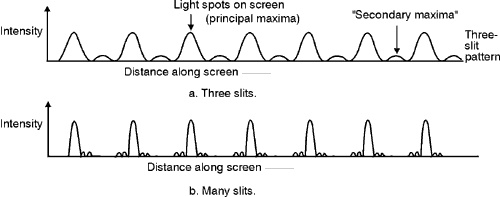

The maximum diffraction efficiency of the 1st order diffraction can be 12.5% when the applied voltage is 5.0 V. The intensities of the diffractions, as well as the variations of the refractive indices, can be controlled by an external electric field via the reorientations of the NLCs. This paper demonstrates an electrically-tunable diffraction grating, as based on nematic liquid crystals (NLCs) in a specialized cell with periodic electrodes, and discusses the polarization properties of the ☑st order diffractions. Considering the interesting physics and potential applications, liquid crystal grating is a research topic worthy of further investigation. Previous literature also shows that the diffraction efficiency of first order diffraction in a dye-doped liquid crystal grating can be influenced by the amount of the doped azo-dyes. Studies regarding tunable gratings, as based on liquid-crystal-related materials, have also been extensively proposed for example, tunable amplitude gratings based on polymer-dispersed liquid crystals, optically and electrically controllable gratings based on dye-doped nematic liquid crystals, tunable phase gratings on the basis of the photo-alignment technique, and circular-polarization selective gratings based on cholesteric liquid crystals. As diffraction grating is a key component in optical systems, researchers are devoted to developing tunable diffraction gratings. ĭiffraction grating is a dispersion element widely applied in optical systems, and its main applications include spectrometers, wavelength division multiplexing (WDM), and external-cavity lasers.

With the features of controllable birefringence and refractive indices, liquid crystal has been applied in various fields, such as displays, ophthalmic optics, beam shaping, and bio-sensors. Liquid crystal is a birefringent material that is powerful enough for the modulation of polarization. Polarization of light can be manipulated by anisotropic absorption, anisotropic reflection, birefringence materials, or metamaterials for example, a transverse-magnetic (TM) wave or polarization can be picked out by means of the Brewster angle, while linear polarization can be rotated by a specific angle after passing through an optical active medium. Polarization is an interesting feature in optics, and numerous applications based on the control of polarization have attracted attention recently, such as 3D displays and virtual reality/augmented reality (VR/AR).


 0 kommentar(er)
0 kommentar(er)
